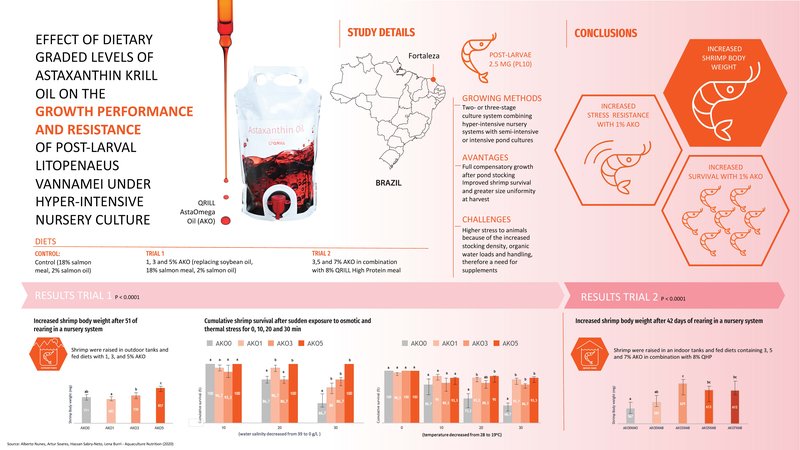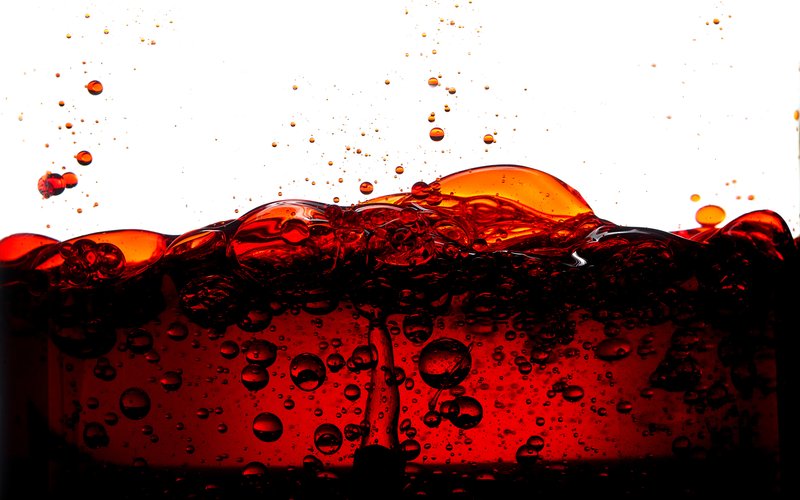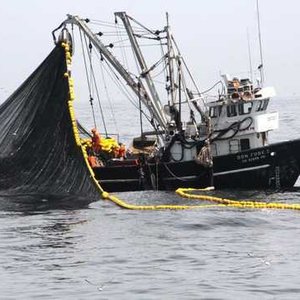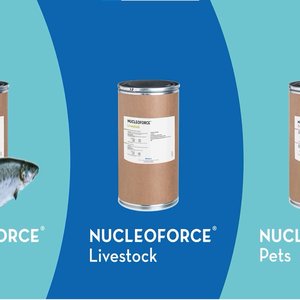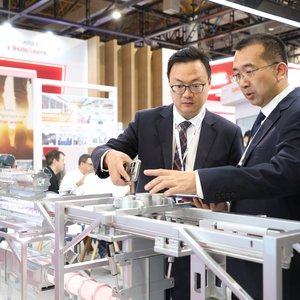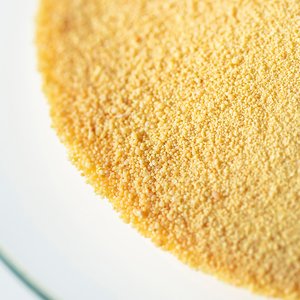While previous studies confirmed the stimulating effects of astaxanthin krill oil on Pacific whiteleg shrimp juveniles, little is known about its effect on shrimp in the post-larval stage. A new study from Instituto de Ciências do Mar, Brazil (Labomar) and Aker BioMarine aimed to remedy this knowledge gap, analyzing how astaxanthin krill oil impacts the shrimp during this intermediary growth stage.
The team of scientists concluded that astaxanthin krill oil can result in a significant advantage for the Pacific whiteleg shrimp in the post-larval stage. Through the use of growth-enhancing astaxanthin krill oil in the post-larval diet, the production cycle can be shortened and mortality reduced, even under stressful conditions.
Key findings
- Regardless of the rearing system, dietary supplementation of astaxanthin krill oil resulted in improved body weight among the post-larval Pacific whiteleg shrimp.
- Diets containing at least 10 grams of astaxanthin krill oil per kilogram of diet led to higher survival rates when the shrimp were exposed to an acute and sudden drop in water salinity (osmotic stress) and temperature (thermal stress).
- Enhanced growth performance and survival under stress may be related to the increased amount of dietary EPA, DHA and astaxanthin that is supplied when krill astaxanthin oil is part of the diet.
Scientists strive to mirror typical conditions in the nursery stage
The post-larval stage represents the time between larvae and juvenile in shrimp farming. Post-larval shrimp are subject to aggressive and nutrient-rich feeding programs during this time, in part to combat the typically dense nursery culture conditions. The study was carried out at Labomar’s facility in Brazil using two different rearing systems, one indoor (50 tanks) and one outdoor (40 tanks), over the course of 41 and 52 days, respectively.
“We used a total of 10 tanks for each dietary treatment, stocking around 3,500 shrimp per tank in the outdoor set and around 1,200 shrimp per tank in the indoor set. This mirrored the dense conditions experienced at this stage of shrimp rearing,” explained Alberto J.P. Nunes from Instituto de Ciências do Mar, Brazil (Labomar), and one of the authors of this study.
The scientists behind the study prepared five different diets for the indoor test group and four diets for the outdoor test group. The outdoor set received varying levels of astaxanthin krill oil (QRILL AstaOmega Oil from Aker BioMarine), along with a control diet devoid of any krill oil. The indoor set’s diet included varying levels of both astaxanthin krill oil and krill meal to evaluate their effectiveness as substitutes for fish oil and fishmeal. These diets were compared to a control diet without krill oil or meal.
“Overall, our findings reveal that dietary inclusion of 30-50 grams of astaxanthin krill oil per kilogram of diet, combined with 80 grams of krill meal, has a strong effect on the growth and survival of post-larval Pacific whiteleg shrimp raised under high-density conditions,” said Nunes. “In addition, we saw that the shrimp receiving the diet of 50 grams of krill oil showed zero mortality after a 30-minute exposure to acute osmotic stress.”
Check out the study here.
